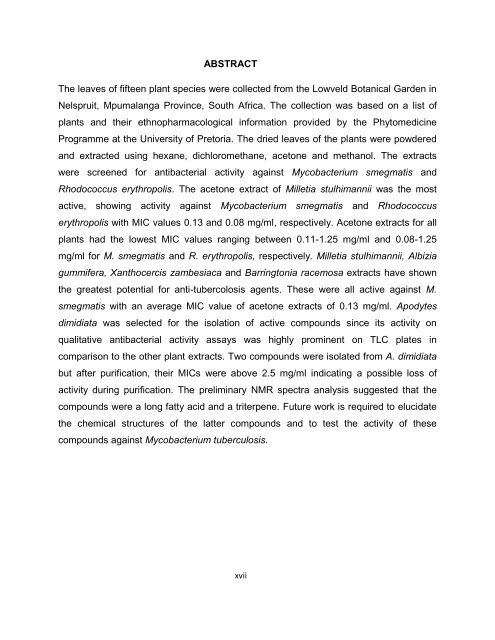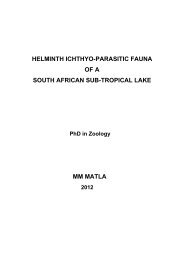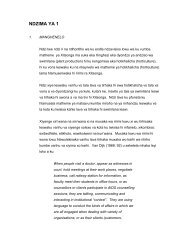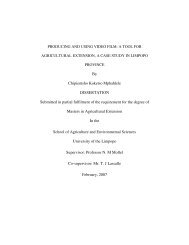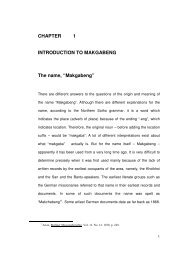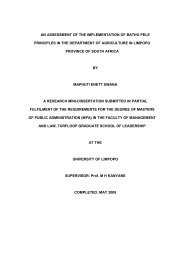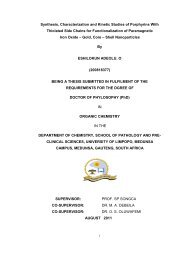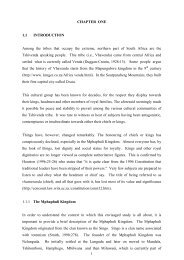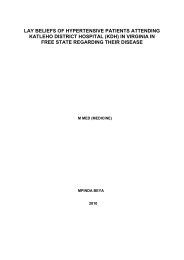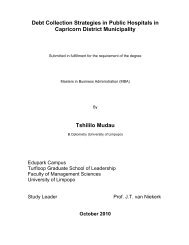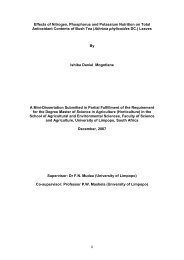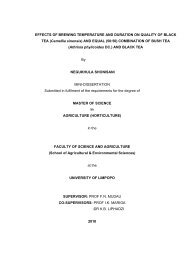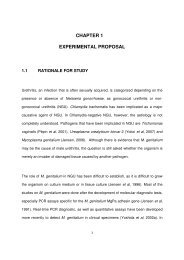Mmushi T MSc (Microbiology).pdf
Mmushi T MSc (Microbiology).pdf
Mmushi T MSc (Microbiology).pdf
Create successful ePaper yourself
Turn your PDF publications into a flip-book with our unique Google optimized e-Paper software.
ABSTRACT<br />
The leaves of fifteen plant species were collected from the Lowveld Botanical Garden in<br />
Nelspruit, Mpumalanga Province, South Africa. The collection was based on a list of<br />
plants and their ethnopharmacological information provided by the Phytomedicine<br />
Programme at the University of Pretoria. The dried leaves of the plants were powdered<br />
and extracted using hexane, dichloromethane, acetone and methanol. The extracts<br />
were screened for antibacterial activity against Mycobacterium smegmatis and<br />
Rhodococcus erythropolis. The acetone extract of Milletia stulhimannii was the most<br />
active, showing activity against Mycobacterium smegmatis and Rhodococcus<br />
erythropolis with MIC values 0.13 and 0.08 mg/ml, respectively. Acetone extracts for all<br />
plants had the lowest MIC values ranging between 0.11-1.25 mg/ml and 0.08-1.25<br />
mg/ml for M. smegmatis and R. erythropolis, respectively. Milletia stulhimannii, Albizia<br />
gummifera, Xanthocercis zambesiaca and Barringtonia racemosa extracts have shown<br />
the greatest potential for anti-tubercolosis agents. These were all active against M.<br />
smegmatis with an average MIC value of acetone extracts of 0.13 mg/ml. Apodytes<br />
dimidiata was selected for the isolation of active compounds since its activity on<br />
qualitative antibacterial activity assays was highly prominent on TLC plates in<br />
comparison to the other plant extracts. Two compounds were isolated from A. dimidiata<br />
but after purification, their MICs were above 2.5 mg/ml indicating a possible loss of<br />
activity during purification. The preliminary NMR spectra analysis suggested that the<br />
compounds were a long fatty acid and a triterpene. Future work is required to elucidate<br />
the chemical structures of the latter compounds and to test the activity of these<br />
compounds against Mycobacterium tuberculosis.<br />
xvii


